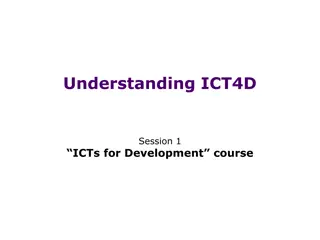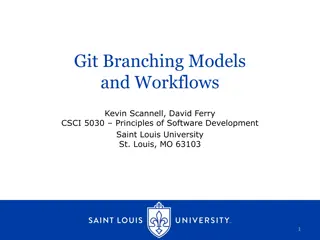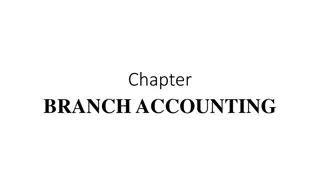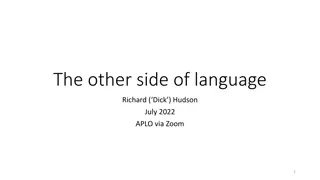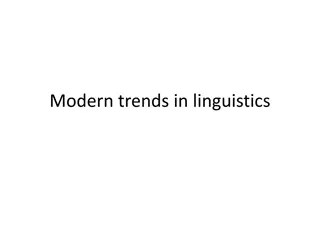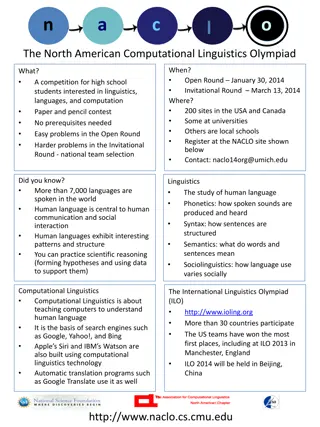Understanding Linguistics: Overview, Branches, and Scopes
Linguistics explores the study of language, encompassing its nature, structure, and functions. It delves into the characteristics of human language, definitions, branches such as applied linguistics and psycholinguistics, as well as scopes like microlinguistics and macrolinguistics. The field investigates the systematic and scientific examination of language, including phonetics, phonology, morphology, syntax, semantics, sociolinguistics, psycholinguistics, and more.
Download Presentation

Please find below an Image/Link to download the presentation.
The content on the website is provided AS IS for your information and personal use only. It may not be sold, licensed, or shared on other websites without obtaining consent from the author. Download presentation by click this link. If you encounter any issues during the download, it is possible that the publisher has removed the file from their server.
E N D
Presentation Transcript
INTRODUCTION TO LINGUISTICS Dr. Somali Saha Assistant Professor Deptt. of English Women s College
WHAT IS LANGUAGE? It is a communication of thoughts and feelings through a system of arbitrary signals such as sounds, gestures or written symbols.
GENERALLY ACCEPTED DEFINITION OF LANGUAGE Language is a system of arbitrary vocal symbols used for human communication.(Wardhaugh, 1972)
CHARACTERISTICS OF HUMAN LANGUAGE Interchangeability: transmitting and receiving information. Productivity: ability to vary a message to reflect differences in circumstances concerned. Cultural Transmission: the ability to learn from others. Arbitrariness: No natural relationship to their meaning. Dynamic: the ever-growing characteristics.
WHAT IS LINGUISTICS? Linguistics is the systematic and scientific study of language.
BRANCHES OF LINGUISTICS Applied Linguistics Historical linguistics Psycholinguistics Computational Linguistics Sociolinguistics
SCOPES OF LINGUISTICS Microlinguistics: phonetics, phonology, morphology, syntax, semantics and pragmatics. Macrolinguistics: sociolinguistics, psycholinguistics, neurolingistics, stylistics, cognitive linguistics, applied linguistics etc.
MICROLINGUISTICS Phonetics: It is the scientific study of speech sounds. Phonology: It is the study of how speech sounds function in a language. Morphology: It is the study of formation of words. Syntax: It is the study of sentence patterns. Semantics: It is the study of meanings. Discourse: It is the study of connected sentences.
MACROLINGUISTICS Sociolinguistics: It studies the relation between language and society. Psycholinguistics: It is the study of language and mind. Anthropological Linguistics: It explores the relation between language and culture. A Neurolinguistics: It is the study of language processing and language representation in the brain. Stylistics: It is the study of how literary effects can be related to linguistic features. Discourse: It is the study of the relationship between language and the contexts in which language is used. Computational Linguistics: An approach which employs mathematical techniques.
SOME IMPORTANT CONCEPTS AND DISTINCTIONS IN LINGUISTICS Langue and Parole Competence and Performance Sign and Symbol Signifier and Signified Structure and System Substance and Form Syntagmatic and Paradigmatic Synchronic and Diachronic
FAMOUS LINGUISTS Panini Dionysuis Thrax and Apollonius Leonard Bloomfield Ferdinand de Saussure Noam Chomsky Thank You




